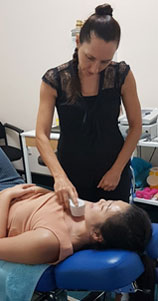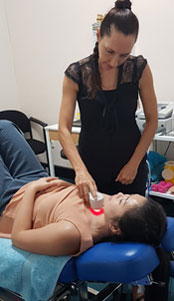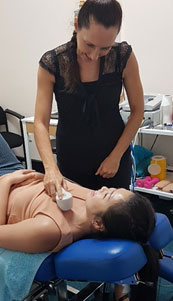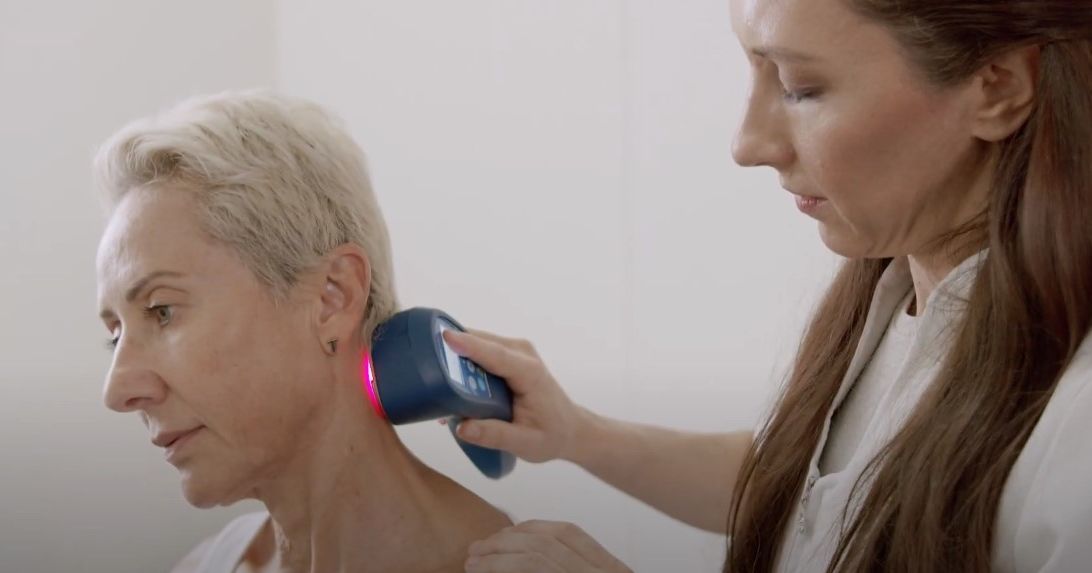The sternoclavicular joint is where the clavicle (collarbone) joins the sternum (breastbone) at the base of the neck. Although it is uncommon, problems with or pain at the sternoclavicular joint can arise, the most common being from injury or osteoarthritis.
Injuries to sternoclavicular joint can be something as mild as a joint sprain or more serious such as a fracture of the clavicle or sternum itself. The ligaments surrounding the sternoclavicular joint are some of the strongest and it would normally require a great deal of impact to cause damage.
A sternoclavicular joint sprain is usually caused when the chest makes impact with an object or force, such as during a motor vehicle accident, repetitive strain/lifting or a sporting injury. A sternoclavicular joint sprain involves a tear in the surrounding ligaments which can usually be graded as type I, II or III.
- Grade I: a grade I sternoclavicular sprain indicates a minor tear within the ligaments which can only been seen under a microscope
- Grade II: a grade II sternoclavicular sprain indicates a tear that is more visible to the naked eye, however the ligaments surrounding the area will still remain connected.
- Grade III: a grade III sternoclavicular sprain indicates a complete tear within one or more of surrounding ligaments. Due to the severity and completeness of the tear this will usually lead a separation within the joint.
- A sudden onset of pain in the sternoclavicular joint area following an injury
- Pain may only be present when the arm is lifted overhead, moved across the body or when lifting objects
- In more severe grade injuries, the pain may be so severe the patient may not be able to perform normal activities without cradling their arm
- There may be swelling, bruising or visible deformity at the front of the chest
Treatment: A mild sprain usually gets better with rest and cold laser therapy, which can be used for 5 minutes at a time for the first few days after injury. Moderate sprains may require some help from your chiropractor to get the joint back into the right position.
Mobilisations: Sternoclavicular joint mobilizations allow for better movement within the joint and to assist in getting the joint in its optimal position.
Interferential current: Assists in reducing inflammation to the area and accelerate the healing process. It may also reduce pain.
Posture correction: when you exert an incorrect posture, you are putting excess strain on your joints, in this case, the sternoclavicular joint. This excess weight and strain can result in the joint to be misaligned, which puts strain on the surrounding musculature which in turn causes pain and inflammation in the front of chest.
Massage: massage or soft tissue therapy can be useful in alleviating pain by treating the surrounding musculature and reducing tension within the tissues.
Low level laser therapy: low level laser therapy assists by reducing pain, reducing inflammation and speeding up the healing process.



If you would like further information regarding Cold Laser Treatment or to book an appointment, feel free to contact our technician, Dr Linda Schiller, on 0468 429 111 or visit our website at www.lakesidelaser.com.au.



